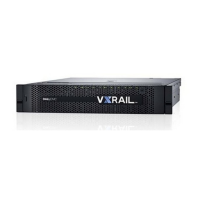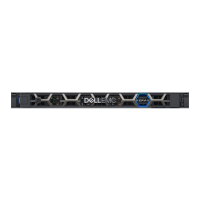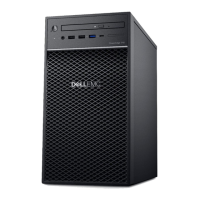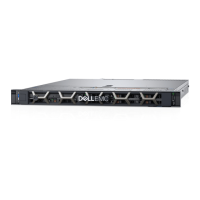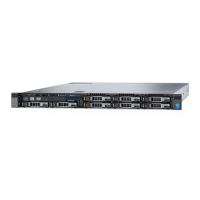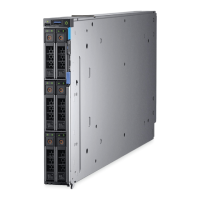8 | Dell EMC VxRail Appliance Operations Guide
© 2017 Dell Inc. or its subsidiaries.
vSphere High Availability (HA) – Provides virtual machine (VM) failover and restart
capabilities
VMware ESXI hypervisor
In VxRail, the ESXi hypervisor deploys and services VMs on cluster nodes. VMs are secure and
portable. Each VM is a complete system with processors, memory, networking, storage and
BIOS. VMs are highly available and the underlying storage is transparent. Moving a VM’s virtual
disk from one type of storage to another has no effect on the VM’s function.
VMs are isolated from one another, so when a guest operating system running on a VM fails,
other VMs on the same physical host are not affected and continue to run. VMs share access to
CPUs, and ESXi is responsible for CPU scheduling. In addition, ESXi assigns VMs a region of
usable memory and provides shared access to the physical network cards and disk controllers
associated with the physical host. All X86-based operating systems are supported. Different
virtual machines can run different operating systems and applications on the same physical
hardware.
VMware virtual networking
vSphere’s virtual networking capabilities are part of the ESXi server and managed by vCenter.
Virtual networks can be built on a single ESXi server host or across multiple ESXi server hosts.
VxRail VMs communicate with each other using the VMware Virtual Distributed Switch (VDS),
which functions as a single logical switch that spans multiple nodes in the same cluster. VDS
uses standard network protocols and VLAN implementations, and it forwards frames at the
data-link layer.
VDS is configured in vCenter Server at the datacenter level, maintaining a consistent network
configuration as VMs migrate across multiple hosts. The VxRail Appliance relies on VDS for
appliance traffic, and vSAN relies on VDS for its storage-virtualization capabilities.
vSAN
VxRail Appliances leverage VMware’s vSAN for enterprise-class software-defined storage.
vSAN aggregates the locally attached disks of hosts in a vSphere cluster to create a pool of
distributed shared storage. Capacity is scaled up by adding additional disks to the cluster and
scaled out by adding additional VxRail nodes. vSAN is fully integrated with vSphere, and it
works seamlessly with other vSphere features.
vSAN is notable for its efficiency and performance. Built directly into the ESXi hypervisor at the
kernel layer, it has very little impact on CPU utilization (less than 10 percent). vSAN is self-
optimizing and balances allocation based on workload, utilization and resource availability.
vSAN delivers a high performance, flash-optimized, resilient hyper-converged infrastructure
suitable for a variety of workloads. Enterprise-class storage features include:
Efficient data-reduction technology, including deduplication and compression as well as
erasure coding
QoS policies to control workload consumption based on user-defined limits
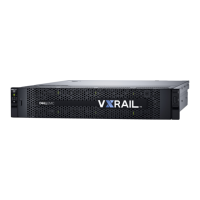
